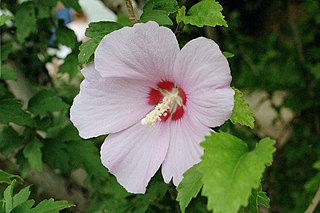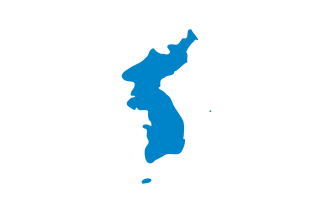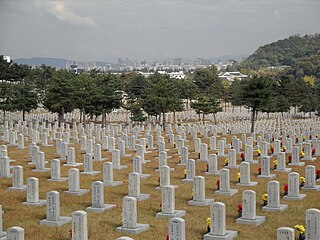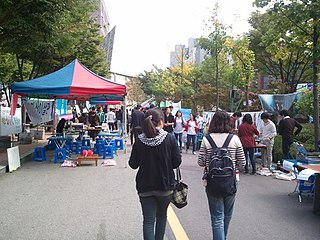 W
WThe contemporary culture of South Korea developed from the traditional culture of Korea which was prevalent in the early Korean nomadic tribes. By maintaining thousands of years of ancient Korean culture, with influence from ancient Chinese culture, South Korea split on its own path of cultural development away from North Korean culture since the division of Korea in 1948. The industrialization, urbanization and westernization of South Korea, especially Seoul, have brought many changes to the way Korean people live. Changing economics and lifestyles have led to a concentration of population in major cities, with multi-generational households separating into nuclear family living arrangements. Today, many Korean cultural elements, especially popular culture, have spread across the globe and have become some of the most prominent cultural forces in the world.
 W
WIn South Korea, etiquette, or the code of social behavior that governs human interactions, is largely derived from Korean Confucianism and focuses on the core values of this religion. In addition to general behaviour, etiquette in South Korea also determines how to behave with respect to social status. Although most aspects of etiquette are accepted by the country at large, customs can be localized to specific regions or influenced by other cultures, namely China, Japan, and the United States.
 W
WThe ABU Radio Song Festival 2012 was the first edition of the biennial ABU Radio Song Festivals, organised by the Asia-Pacific Broadcasting Union (ABU). The festival took place in the KBS Hall, which is located in the South Korean capital of Seoul and coincided with the 49th general assembly of the ABU. The ABU Radio Song Festival attracted twenty-six original entries representing eighteen radio broadcasters from fifteen countries, which competed in a preliminary jury round. The juries selected thirteen entries from twelve radio broadcasters in ten countries to qualify for the final show which was held on 11 October 2012. Fifteen entries were originally selected to participate in the grand final. However, Fiji and Sri Lanka withdrew from the radio competition prior to the final show, and thus only thirteen entries participated in the competition on 11 October 2012.
 W
WBang is a romanization of the Korean word 방, meaning "room". In a traditional Korean house, a sarangbang is the study or drawing room, for example.
 W
WConstitution Day or Jeheonjeol in South Korea is observed on 17 July, the day that the South Korean constitution was proclaimed in 1948. The date was deliberately chosen to match the founding date of 17 July of the Joseon dynasty.
 W
WDadeumi or Dadeumijil or Kinuta is a Chinese, Korean, and Japanese traditional ironing method where two women knelt on the floor, facing each other across a smoothing stone or Dadeumitdol (다듬잇돌), beating out a rhythm on the cloth to press out the wrinkles of the laundered cloth and soften it. Dadeumi is a unique to Korea. Dadeumi requires Dadeumitbangmang-i and Dadeumitdol. Dadeumitbangmang-i is a bat that pounds on the cloth. The stone under the cloth is called a Dadeumitdol. Also, the cloth is wrapped in a thick round bat, Hongdooggae ', and Dadeumi is performed. It is used to trim a thin cloth such as ramie fabric or silk.
 W
WA gireogi appa is a South Korean term that refers to a man who works in Korea while his wife and children stay in an English-speaking country for the sake of the children's education. The term is inspired by the fact that geese are a species that migrate, just as the gireogi appa father must travel a great distance to see his family. Estimates of the number of gireogi appa in South Korea range as high as 200,000 men. The word 'gireogi appa' was included in the report '2002 New Word' by the National Academy of Korean Language.
 W
WGomusin are a traditional type of Korean women's shoe. The term "Gomusin" is also used as a social designation; in this sense it refers to young Korean women who are waiting for their boyfriends to return from the compulsory, two-year service in the South Korean army. Its origin comes from gomsin, which means "wear the rubbers back to front". The word is an abbreviation of Gomusin. Since all Korean men are obliged to serve in the army, it is common to find gomsin among Korean women who are between twenty and thirty years old.
 W
WHell Joseon, Hell Chosun or Hell Korea is a satirical South Korean term that became popular around 2015. The term is used to criticize the socioeconomic situation in South Korea. It is particularly popular among younger Koreans, due to their feelings about unemployment and working conditions in modern South Korean society.
 W
WHibiscus syriacus is a species of flowering plant in the mallow family, Malvaceae. It is native to south-central and southeast China, but widely introduced elsewhere, including much of Asia. It was given the epithet syriacus because it had been collected from gardens in Syria. Common names include the Korean rose, rose of Sharon, Syrian ketmia, shrub althea, rose mallow. It is the national flower of South Korea and is mentioned in the South Korean national anthem.
 W
WHodori (Korean: 호돌이) was the official mascot of the 1988 Summer Olympic Games in Seoul, South Korea. The stylized tiger was designed by Kim Hyun as an amicable Amur tiger, portraying the friendly and hospitable traditions of the Korean people.
 W
WHonjok is a South Korean term for people who willingly undertake activities alone. The term was popularized in 2017 when South Korea saw an increase in the number of people eating, drinking, traveling, and doing other activities alone. The honjok lifestyle is considered a "significant shift" away from South Korea's traditionally group-oriented society.
 W
WK-Beauty is an umbrella term for skin-care products that are derived from South Korea. The fad gained popularity worldwide, especially in East Asia, Southeast Asia, South Asia and the US and focuses on health, hydration and an emphasis for brightening effects.
 W
WThis is a list of cultural icons of South Korea. It contains the most important symbols of South Korea and symbols that represent different aspects of South Korean culture.
 W
WMarriage in South Korea mirrors many of the practices and expectations of marriages in other societies, and, as such, is constantly changing.
 W
WMemorial Day in South Korea commemorates all the Korean men and women who have died during military service. In particular, the Battle of Bongoh Town, Battle of Cheongsan-ri, Korean War and the Vietnam War are remembered on this day. It is commemorated on June 6.
 W
WThe Pledge of Allegiance to the Korean Flag is the pledge to the national flag of South Korea. The pledge is recited at flag ceremonies immediately before the South Korean national anthem.
 W
WUniversity culture in South Korea is different from that in other countries, consisting of events such as Student Orientation (OT) and Membership Training (MT), as well as festivals and student clubs.
 W
WYeontan coal briquettes used in South Korea for cooking and home heating. Made from a mixture of lignite coal dust and a gluing agent that kept the dust particles together, they were a welcome alternative to firewood and natural coal partly because they came in a consistent, stackable size and shape. There are 5 standard sizes for yeontan, and the 2nd standard is widely used in households. The 2nd standard briquette is cylindrical in shape, weighs 3.5 kg, and is about 20 cm in height and 15 cm in diameter. The standard yeontan has 22 holes drilled into its top to facilitate steady, efficient burning, and a household typically used one to three briquettes per day in the winter. A new yeontan would sometimes be placed atop the current one when it was halfway burned, to continuously maintain the fire.